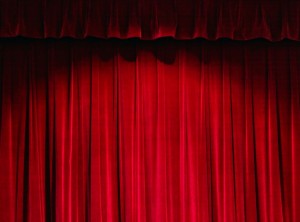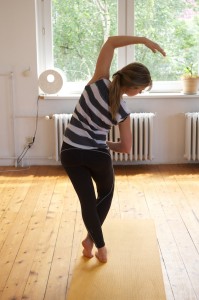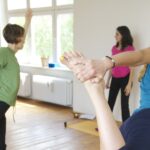 The subconscious. It’s is a tricky thing to grab a hold of. It speaks to us through dreams, physical sensations, inexplicable associations, vague memories, intuitions and other non-linear, tricky-to-define phenomena. It influences the way we interact with the world, whether we know it or not.
The subconscious. It’s is a tricky thing to grab a hold of. It speaks to us through dreams, physical sensations, inexplicable associations, vague memories, intuitions and other non-linear, tricky-to-define phenomena. It influences the way we interact with the world, whether we know it or not.
But by directing focused attention of the conscious mind into these phenomena, we can use it as a tool to access the subconscious. We can draw back the curtains and find out how it is working.
Therapy does this through talking: “What does this experience remind you of? How does it feel in your body when you talk to your boss? What did you dream last night?”
Yoga asana access the subconscious through concentration, breathing and physical movement of blocked lymph and muscle. Regular practice helps to loosen and eventually dissolve blocks in energy in both the body and the mind.
When the subconscious blocks are loosened and the energy of consciousness flows freely, chitta becomes incredibly powerful. Fluid, responsive chitta sees harmony, calmness and safety (Whether I make more money or not, everything will be OK). This feeling makes life a lot easier! Decisions come out of a clearer place than before. You perceive a spaciousness and sense of possibility that was always there, but that your subconscious mind could not recognize, because it was tied up in knots about old things.
Directly out of unblocked chitta flows the ability to respond intelligently and thoughtfully to your life and the world around you. You are thus enabled to use your mind to make smart, helpful choices, and you avoid getting caught in old patterns and recreating bad dynamics.

Classical Hatha yoga and Vinyasa Flow yoga both offer these benefits, but we are happy to announce the addition of a new here at English Yoga Berlin. On Thursdays, from 16h-17h30, Melina Cinq-Mars will be teaching Hidden Language Yoga.
Hidden Language Yoga is a unique technique created by Swami Sivananda Radha. In Hidden Language Yoga, we practice the physical posture of asana, as well as looking at the symbolic meaning behind the posture´s concept. It is a reflective yoga class that
requires a journal and pen to take note of what the body has to say, what the mind thinks and what emotions emerge. This gives participants a chance to create space in both the body and mind, space to learn to know one´s self better. Hidden Language can also involve some sharing of insight at the end of the class for the benefit of all.
We hope to see you on the mat!
 To celebrate the longer days and the budding green leaves, we are offering a special Springtime gift to all people looking for English yoga classes in Berlin!
To celebrate the longer days and the budding green leaves, we are offering a special Springtime gift to all people looking for English yoga classes in Berlin!














